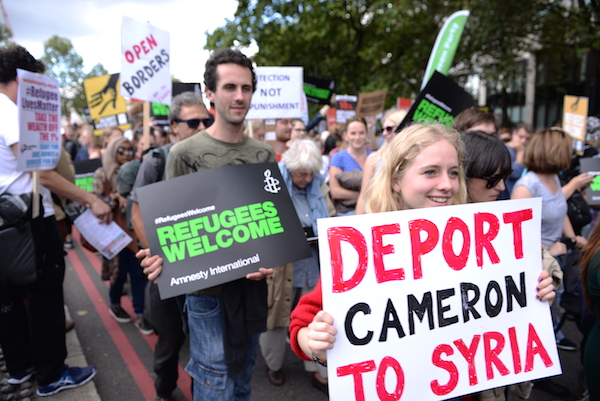You have no items in your cart. Want to get some nice things?
Go shopping
Refugees – in or out? Our social media feeds have been full of both sides of the debate. English news outlets have reported one side of the Syrian conflict, we have seen footage of a Hungarian newswoman tripping refugees beside videos of Germany ecstatically welcoming refugees, news outlets such as Al Jazeera painted another picture, but what was lacking was the voice of the refugees. Many news outlets failed to truly represent the situation, and so we never seemed to get a full picture. Our view of the Syrian conflict was perhaps nowhere near correct, we could have had it all wrong, until a few weeks ago, when our back and forth arguments were halted by the shattering photo of three-year old Syrian Aylan Kurdi lying dead on the beach circulating rapidly across the world. One picture was enough to bring everyone onto the same page – people are dying, we need to do something.
Although we never heard Aylan’s voice in the mix, his silent body speaks more loudly and clearly than any voice we’ve heard on the subject. As cliché as it may sound, a picture really does tell a thousand words in this case. Our interpretation of words is totally different to our interpretation of a photo. With this photo, there is only one interpretation, the truth. The photographer, Nilufer Demir, told her agency DHA, “I had to take this photo and I didn’t hesitate to…The only thing I could do was to make his outcry heard.” She said, “I never believed a photograph could have such an impact…I would really like it if it could change the way things are going.” The photograph certainly changed the way the conflict is being seen and discussed. Shortly after it’s release, suddenly thousands more people voiced their disgust in their country’s lack of aid. It even impacted British policy, with Cameron finally stepping up and realising that fences and dogs are certainly not the way forward after outcry from British citizens. Seeing a photo of Aylan’s corpse put everything into perspective; the conversations online swiftly changed from what should we do to what can we do.
But with a photograph such as this entering news, we must discuss the morality of using pictures of the dead as propaganda. Is there a line that shouldn’t be crossed? If we were to use these pictures in everyday news, we would become desensitised, accustomed to death. Where does the balance between moral and immoral, extreme and necessary measures lie in the pursuit for truth? With social media being the predominant source for sharing, once a photo is released there is no calm or balance, as we have seen recently. In a society where death is almost a taboo subject, it is interesting to view the effects the photo had. For many, it was the very fact that it wasn’t a graphic or violent image of Aylan Kurdi that made it so upsetting, as it looks as if he could only be sleeping. For others, it was the hard-hitting fact that this could be their child in tiny shorts and trainers lying in the sand. With the release of this photo, many people have come to realise the truth about the situation in Syria. This picture relays the horrific situation more bleakly and more powerfully than any news article that graces our screens. We remain wondering if we should be using these photos. It almost feels that it isn’t real unless we see hard evidence like Aylan’s picture. It could be fictional without a photograph. Without something visual, it seems awareness and attitudes are rarely changed.
My questions are; should we be using more graphic photos in order to raise awareness? With our constant interaction with social media, how do photographs change mindsets and opinions? Is it completely moral to be using photos such as this? This photograph has opened a new realm of journalism surrounding Syrian refugees and the conflict. A more honest, open and empathetic realm, one that doesn’t necessarily need as many words or opinions from journalists. Syrian voices need to be heard. Through photographs such as the devastating photo of Aylan Kurdi, conflict is humanised, we are made completely aware of reality, that these are real people.

About Isabel Gonzalez-Prendergast
Isabel is particularly interested in international literature, learning about different cultures and philosophies.




